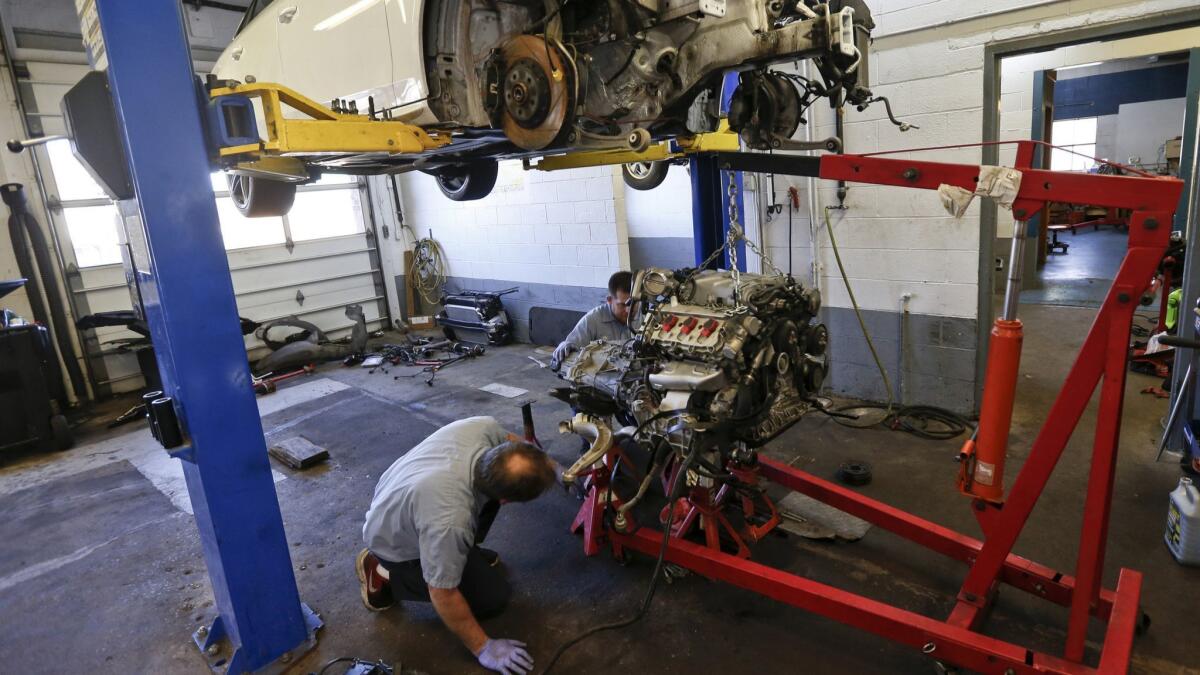Your old car might not be so old as vehicle age hits a record

- Share via
Reporting from Detroit — The average age of cars and trucks in the U.S. has hit a record 11.8 years, as better quality and technology allows people to keep them on the road longer.
The 2019 figures from data provider IHS Markit show that the rate of increase in average vehicle age is slowing, but the average age is still expected to go over 12 years early in the next decade. The average age is up 0.1 years from 2018, the Southfield, Mich., company said.
People are feeling comfortable keeping vehicles longer because they’re built better than in the past, said Mark Seng, director of global automotive aftermarket for IHS Markit.
“The quality is higher, lasting longer, withstanding the weather,” Seng said.
“The 40% drop in new vehicle sales due to the recession created an acceleration in average age like we’ve never seen before. In the last couple of years, however, average age has returned to its more traditional rate of increase,” he said.
Plus, original owners are keeping their vehicles longer and maintaining them better because they’re financing them for longer, six or even seven years in many cases, he said.
“That helps improve the overall life of the vehicle,” he said.
Western states have the oldest vehicles at 12.4 years, while the average age in the Northeast is only 10.9 years.
That’s due largely to less stop-and-start traffic that wears on a vehicle. Weather conditions also play a part.
Montana has the oldest average age at 16.6 years. The youngest is Vermont, with an average age of 9.9 years.
Because of the growth in popularity of light trucks, including SUVs, vehicle age in the U.S. is increasing at different rates across vehicle segments. From 2018 to 2019, the average age of passenger cars increased 2.2% while light trucks aged at a rate of just 0.1%.
The aging vehicles should be a boon to repair shops, which may want to change strategies to cater to owners of older vehicles who may be willing to spend less on parts given the vehicles’ age, Seng said.
The number of light vehicles in use in the U.S. also hit a record of more than 278 million this year, according to IHS, which tracks vehicle registrations nationally. That’s an increase of more than 5.9 million, or 2.2%, since 2018.
It represents one of the highest annual increases the U.S. auto industry has seen since IHS Markit began tracking growth of vehicles in operation — second only to the 2.3% growth in 2016.
“A larger fleet means more service and repair opportunities in the future,” Seng said.






